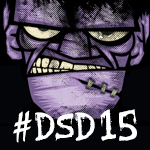In my last post, I talked about why SAS utilizes a rotated Singular Value Decomposition (SVD) approach for topic generation, rather than using Latent Dirichlet Allocation (LDA). I noted that LDA has undergone a variety of improvements in the last seven years since SAS opted to use the SVD method. So, the
Uncategorized

There's a sense of foreboding and uncertainty. You look around, but you're uncertain where to go next. What to do. Or who to turn to. Ultimately, it feels like an eerie calm before the storm. And you get that creepy feeling that something awful is just around the corner. I might be

When you work with big data, you often deal with both a large number of observations and a large number of features. When the number of features is large, they can be highly correlated, resulting in significant amount of redundancy in the data. Principal component analysis can be a very

Do you have fun being a computer geek, and programmatically creating holiday images? If so, then this blog's for you! In this example, I demonstrate how to take simple x/y coordinates, and create map polygons shaped like holiday images, that can be plotted using SAS/Graph's Proc GMap. Once you learn the

Did you know that the FREQ procedure in SAS can compute exact p-values for more than 20 statistical tests and statistics that are associated with contingency table? Mamma mia! That's a veritable smorgasbord of options! Some of the tests are specifically for one-way tables or 2 x 2 tables, but many apply

SAS experts, users and decision makers are taking over Las Vegas this week while attending Analytics 2015 and The Premier Business Leadership Series. Whether you are in Vegas or need to participate from afar, read on for help to stay in tuned and be a part of it all. Watch
The high cost of pricing myopia When launching a pharmaceutical product, it’s not enough to negotiate the best reimbursable price for each local market. Overall financial performance will depend on successfully managing go-to-market strategies at the global level. That means determining the optimal price and launch sequence for all the
The high cost of pricing myopia When launching a pharmaceutical product, it’s not enough to negotiate the best reimbursable price for each local market. Overall financial performance will depend on successfully managing go-to-market strategies at the global level. That means determining the optimal price and launch sequence for all the

Ok, so the title is a little provocative, but some people are dubious that data science training is even possible, because they believe data science entails skills one can learn only on the job and not in a classroom. I am not in that camp, although I do believe that data

In knapp vier Wochen ist es wieder soweit. Die SAS Analytic-Conference Series „A2015“ macht in Rom Station (analytics 2015 rome). Seit dem ersten Event im Jahr 2009 in Kopenhagen fand die Konferenz auch bereits zweimal in Deutschland statt (2012 in Köln und 2014 in Frankfurt) und hat sich im Laufe

When I was a kid, I always found it difficult to pick a Halloween costume. Now that I'm older, perhaps I can use computers & analytics to make my decision (and yours) easier! ... There are several different schools of thought on Halloween costumes - for example, some like to

“Field of dreams warehouse”– a historic phrase I used in the early days of data warehouse development. It describes the frenzy of activity that took place to create enterprise data infrastructure, before the business rationale for the data use was even understood. Those were the early days. In some ways
Higher education is a buyer’s market today, with the student being the buyer, according to Nick Hillman, director of the Higher Education Policy Institute. And don’t universities know it. Not only are they dealing with tuition fee caps, but they face mounting competition from other educational institutions. There are many UK
When I talk with more analytically savvy users of SAS® Text Miner or SAS® Contextual Analysis, I inevitably get asked questions about why SAS uses a completely different approach to topic generation than anybody else and why should they trust the approach SAS adopts? These are good questions. I first

I don’t know about you, but I'm asked every day where some type of data lives in our enterprise. I keep thinking that we have not done a good job of helping people learn to help themselves! A few things I have learned about corporate data assets are: The data

How does SAS integrate with Hadoop? That's a question we often hear from people new to SAS who want to learn more about using SAS with Hadoop. At Strata + Hadoop World earlier this month, we were able to not only talk to attendees to answer their questions -- we were able to show

The Rule of Three is a writing principle that suggests that things that come in threes are inherently funnier, more satisfying, or more effective than other numbers of things – Wikipedia. 3 Ps of success, Blind Mice, Little Pigs, Stooges, Musketeers, The Matrix, The Lord of the Rings, rings, pairs

Jim Harris explains why it's especially important to assess the quality of metadata when it comes to big data.

How do you simulate a contingency table that has a specified row and column sum? Last week I showed how to simulate a random 2 x 2 contingency table when the marginal frequencies are specified. This article generalizes to random r x c frequency tables (also called cross-tabulations) that have the same marginal row

In my first post of the analytics in real life blog series, we heard four higher education customers discuss using SAS and why they chose SAS. Today we will hear the following three customers share the positive impact of using SAS and analytics for their users and institution. Karl Konsdorf, Acting

My last post, Pitching analytics: recommendations on how to sell your story, discussed the steps I consider when winding up for an analytics pitch. In part 2 of this series I share the tips and tricks I have acquired for throwing strikes for during your analytics pitch. Like everyone, sometimes

It's that time of year again - time to choose what Halloween candy to buy for the trick-or-treaters! This is always a tough decision that has me angsting in the candy aisle. And if selecting the perfect candy wasn't enough pressure, my city (Cary, NC) was recently recognized as #1 on

You’ve read their books. You’ve probably even met them at conferences. But now, we’re revealing another side of our beloved SAS authors in this list of fun facts. Prepare to be surprised. Hint – one of the authors swims with sharks. Tricia Aanderud Tricia has over 100 jokes memorized -

With Big Data, there are far more technical questions than answers.
A recent question posted on a discussion forum discussed storing the strictly upper-triangular portion of a correlation matrix. Suppose that you have a correlation matrix like the following: proc iml; corr = {1.0 0.6 0.5 0.4, 0.6 1.0 0.3 0.2, 0.5 0.3 1.0 0.1, 0.4 0.2 0.1 1.0}; Every correlation

Pink and blue. These colors are often synonymous with gender. In fact, when I was pregnant 16 years ago, we had no idea of our baby’s sex. At the shower, we received lots of blue, green and yellow clothing, but no pink. It’s interesting how blue can represent both male

All of us in the retail and wholesale industry, regardless of role, are responsible for the same objectives: Increase customer satisfaction, inventory productivity, and profitability by way of localization and omni strategies. We've learned that our best strategies sometimes fall short; we spend significant effort analyzing, only to achieve marginal results. Many of

No one knows for sure who coined the term Big Data. Despite etymological studies, we are still no closer to attributing provenance to any one person, or indeed any one period. Some say the term was coined in the '80s, others believe the '90s – and many are convinced the term originated

More and more of my friends seem to be eating less and less meat, for various reasons (such as religious, health, social conscience, weight loss, personal preference, cost savings, etc). So I thought I would put together a graph to help them find alternate sources of protein. While searching for

In today’s brave new technological world, most of us live cocooned in thermo-regulated cars and buildings. Our food and drink is on tap, and we experience little inconvenience beyond death and taxes. It’s easy to forget that life as we know it would come to an abrupt halt without the





















